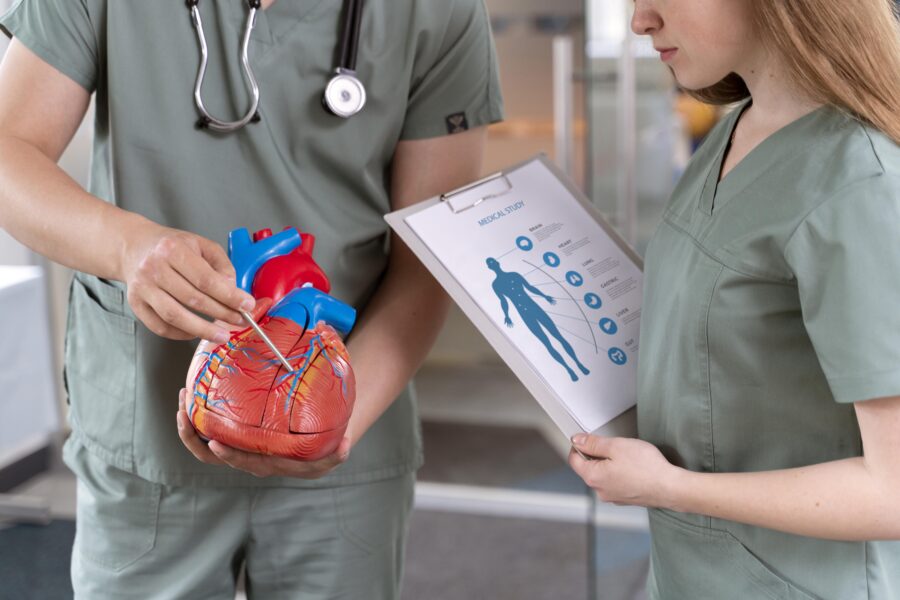Unraveling the Cardiology behind Falls: A Heart Condition Link
Falls, traditionally associated with issues of aging and balance, conceal a more profound link to health than is commonly recognized. One of the lesser-known yet critical connections is with heart conditions. This article seeks to unravel this connection, exploring the interplay between cardiac conditions and falls, examining potential preventive strategies, and discussing the aftermath and management of such incidents.
The Hidden Connection
Cardiovascular diseases, or heart conditions, plague a significant population worldwide and can lead to a plethora of complications. A less-explored aspect is how certain heart conditions can amplify the risk of falls in patients. Understanding this correlation is pivotal in crafting comprehensive healthcare strategies and equipping patients and caregivers to mitigate these risks.
The Physiology of the Heart and its Implications
To comprehend the link between falls and heart conditions, it’s essential to delve into the functionality of the heart. Serving as the body’s primary pump, the heart is responsible for circulating oxygen and nutrient-rich blood to every cell. When the heart’s functioning is compromised, it can lead to an inadequate supply of blood to the brain, precipitating symptoms such as dizziness or fainting – both potential precursors to fall.
Cardiac Conditions and Their Link to Falls
Numerous heart conditions can contribute to an increased susceptibility to falls. Key among these include:
1. Cardiac arrhythmias: Any irregularity in the heart’s rhythm can cause abrupt alterations in blood pressure, leading to dizziness or fainting.
2. Heart failure: In this scenario, the heart is unable to pump enough blood to meet the body’s demands. This can trigger fatigue, weakness, and dizziness, all of which elevate the risk of falls.
3. Orthostatic hypotension: This form of low blood pressure transpires when a person stands up from a sitting or lying position, often causing dizziness and fainting.
4. Aortic stenosis: In this condition, the heart’s aortic valve narrows, obstructing blood flow from the heart to the body. It can induce fainting spells, thereby increasing the likelihood of falls.
5. Carotid sinus hypersensitivity: This can lead to sudden drops in blood pressure, resulting in fainting and subsequent falls.
Preventive Measures: Managing Heart Conditions and Fall Risks
Preventing falls in individuals with heart conditions necessitates a dual approach: managing the heart condition effectively and taking proactive steps to mitigate the risk of falls.
- Heart Condition Management: This process involves regular medical check-ups, adherence to prescribed medication regimens, and lifestyle modifications such as dietary alterations and exercise as directed by the healthcare provider. For conditions like arrhythmias, specific treatments like medications, ablation therapy, or pacemaker insertion may be needed. In the case of aortic stenosis, procedures like balloon valvuloplasty or valve replacement may be necessary.
- Fall Risk Reduction: This aspect encompasses home modifications such as removing tripping hazards, installing grab bars in bathrooms, using non-slip mats, and ensuring adequate lighting. Exercise routines that strengthen muscles and improve balance can also prove beneficial. Regular vision and hearing check-ups are essential as impairments can increase fall risk.
Management and Treatment Post-Fall
Following a fall, immediate medical attention is imperative, particularly for those with pre-existing heart conditions. Assessment will typically include a thorough examination, reviewing the patient’s history, and conducting tests as necessary. The treatment trajectory will hinge on the cause and severity of the fall and the heart condition. This may involve changes in medication, physiotherapy, or even surgical interventions if the fall has led to severe injuries or if the heart condition has deteriorated.
Emphasizing Patient Education and Support
Patient education plays a vital role in managing heart conditions and preventing falls. Healthcare providers should educate patients about their condition, the associated risks, and the signs of worsening health. Additionally, emotional and psychological support is paramount. The fear of falls can lead to reduced mobility and social isolation, increasing the risk of depression and further health decline.
Expanding on Preventive Measures
Beyond the preventive measures mentioned earlier, several other strategies can help reduce the risk of falls in patients with heart conditions.
- Cardiac Rehabilitation: Patients with significant heart conditions, like those who have suffered a heart attack or undergone heart surgery, can benefit from a structured cardiac rehabilitation program. These programs aim to improve cardiovascular fitness, increase strength and flexibility, and reduce the risk of future heart problems, which can indirectly reduce the risk of falls.
- Medication Review: Certain medications, especially those used in the treatment of heart conditions, can increase the risk of falls due to side effects such as dizziness or lowered blood pressure. Therefore, regular reviews of a patient’s medication regime by the healthcare provider can help identify and mitigate these risks.
- Regular Monitoring: Regular monitoring of heart function and overall health can help detect changes early and allow for timely intervention.
- Footwear and Assistive Devices: Appropriate footwear can significantly reduce the risk of falls. Shoes should be sturdy, non-slip, and fit well. For some individuals, assistive devices such as canes or walkers may be necessary.
Understanding the Need for Customized Care
Every individual is unique, and so are their health conditions. Therefore, the approach to preventing falls in patients with heart conditions should be tailored to the specific needs and circumstances of the individual. Factors such as the type and severity of the heart condition, age, other existing health conditions, lifestyle, living environment, and personal preferences should all be taken into account when designing a preventive strategy.
Looking Forward: The Future of Integrated Care
Healthcare is evolving towards more integrated care models. For patients with heart conditions who are at risk of falls, this means more coordinated care that addresses both aspects simultaneously. Technological advancements like wearable devices can aid in monitoring heart health and detecting falls, while telemedicine allows for regular virtual check-ups, especially beneficial for patients with mobility issues.
In Conclusion, The intricate relationship between falls and heart conditions is a critical aspect of patient health and well-being. Understanding this link is a significant step toward holistic patient care, allowing for an integrated approach to managing both conditions. By doing so, we can significantly reduce the risks associated with both heart conditions and falls, ultimately contributing to improved quality of life and patient outcomes.









